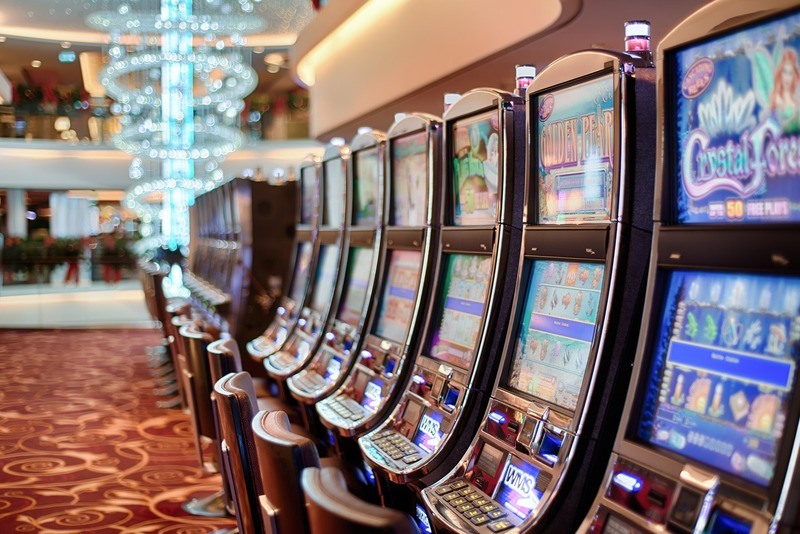
The world of gambling entertainment has long captivated players with its combination of thrill, strategy, and the excitement of luck. As technology advances and the gaming landscape changes, an innovative approach known as game-based learning has started to reshape the way we interact with these classic games. By including game-like elements such as challenges, prizes, and monitoring advancement, gamification enhances participant interaction and changes the classic casino atmosphere into a more interactive and engaging space.
This approach in gambling entertainment not only appeals to seasoned gamblers but also invites a new generation of players who crave a much involved adventure. Featuring elements that encourage participation and foster connection among players, the gamified features infuse new life into beloved classics like poker, blackjack, and slot machines. As we delve deeper into this phenomenon, we will explore how gamification is redefining the casino atmosphere, making it more inclusive, enjoyable, and rewarding for all participating.
Understanding Game Mechanics
Game mechanics denotes the application of game-like features in non-game environments to enhance user involvement and experience. In the realm of gaming, this concept has gained significant attention, transforming classic gaming into a much dynamic and fulfilling experience. By incorporating features such as tokens, stages, and benefits, casinos can build an atmosphere that drives players to engage more often and for longer durations.
At the core of this concept is the want to tap into the internal motivations of players. Casino games that use gamification methods are designed to not only entertain but also to encourage rivalry and achievement. Players are often drawn to the immediate feedback and advancement monitoring that these elements provide. This not only keeps them involved but also fosters a sense of accomplishment as they achieve milestones and access additional aspects.
Moreover, gamification can improve social engagement among players, cultivating a community atmosphere that enriches the satisfaction of gaming experiences. Features such as leaderboards, team challenges, and collaborative tasks allow players to link with fellow players, exchange experiences, and compete in a good-natured manner. This social aspect adds an extra dimension to the experience, rendering it more captivating and pleasurable for participants.
Effect on User Interaction
Game design methods in casino games have remarkably altered the way players interact with their preferred activities. By adding aspects such as incentives, scoreboards, and achievement badges, gambling establishments create an setting that promotes a deeper connection between users and the games they prefer. This enhanced engagement contributes to prolonged gaming sessions and increased player commitment, as gamers strive to unlock new stages or claim special rewards.
Additionally, the interactive feature of interactive casino games cannot be dismissed. Many platforms allow players to compete against others or other users, which introduces a layer of thrill and friendship. casino en ligne This contest drives engagement by tapping into users’ competitive instincts, encouraging them to come back for additional in order to raise their ranking or demonstrate their achievements. As a result, the social interactions foster a feeling of belonging that motivates players to play again.
Additionally, the instant recognition and validation provided by gamification serve to encourage gamers. It may be a message of a new milestone or the thrill of earning a reward, these quick recognitions play a vital role in maintaining attention. By constantly providing users for their actions, casino games become not only a leisure activity; they evolve into an interactive experience that captivates gamers and enhances their pleasure.
Trends in Casino Game Design
The landscape of gambling game design is continuously evolving, driven by technological advancements and changing player preferences. One significant trend is the incorporation of immersive technologies, such as virtual reality and AR reality, to enhance the gaming experience. Such technologies create a more captivating environment, enabling players to perceive as though they are in a real casino, which can lead to longer play sessions and heightened player satisfaction.
A further trend is the integration of storytelling elements into casino games. Game designers are focusing on narratives to create a deeper connection between the player and the game. This narrative-driven approach not only makes the games more enjoyable but also encourages players to invest emotionally, which can enhance their complete experience. By combining traditional gaming mechanics with captivating stories, developers are attracting a wider audience who may not have previously engaged with casino games.
Finally, the rise of multiplayer features is reshaping how players interact with casino games. Many games now incorporate social elements, such as broadcasting achievements or challenging with friends, to promote social interaction and engagement. This trend reflects a move towards a more participatory experience, where players can link with others, sharing their enthusiasm and challenges. As casinos adapt to these social dynamics, the act of gaming becomes not just about individual play, but also about fostering connections among players.